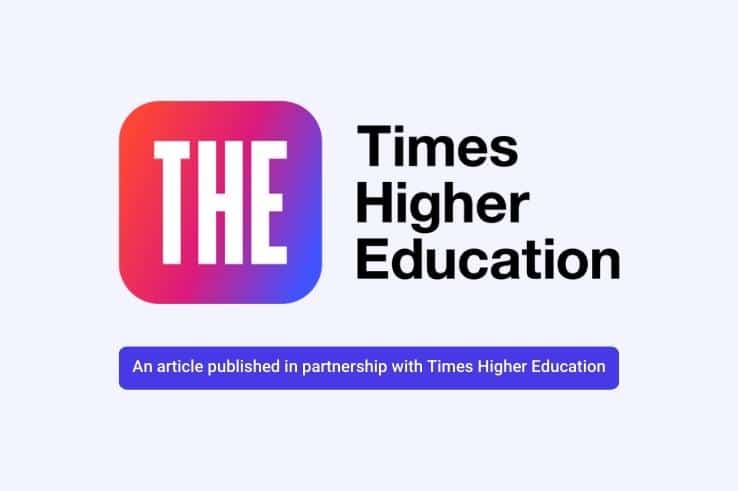
Class is the next generation virtual classroom for K-12, higher education, government agencies, and the workplace. Contact us today to schedule your live demo and see Class in action.

Class is the next generation virtual classroom for K-12, higher education, government agencies, and the workplace. Contact us today to schedule your live demo and see Class in action.

This article was originally written and published by Times Higher Education in partnership with Class.
As the days of pandemic-enforced digital learning recede, universities must find ways to ensure student engagement while supporting faculty to improve their digital skills.
Hybrid and online learning is becoming the norm around the world as faculty adapt to new ways of teaching. However, as these modes grow in popularity, institutions must adopt the right tools and platforms to deliver learning journeys and pedagogical methodologies that work for instructors and students.
A Times Higher Education webinar, held in partnership with Class, featured a panel of leaders from academia and industry who discussed how recent shifts in teaching are playing out and what approaches require improvement.
“We are finding that some people are stuck in the crisis mode of delivering online teaching using basic tools, in the same way we did in the pandemic,” said Paul Cave, Digital Education Manager at the University of Leeds.
“I don’t think we have embraced the possibilities of hybrid learning,” said Cave. It provides excellent opportunities to address issues such as accessibility, but universities must find ways to make that experience consistently better for students, he added. To improve hybrid and online learning, technological development alone is unlikely to be enough. An evolution in mindset and culture will also be required. The physical space where hybrid learning takes place also needs to be considered.
“Before the pandemic, many departments did not use online technologies,” said Çiğdem Çavdaroğlu, Head of the Distance Learning Center at Işık University. “The pandemic is the most important factor that triggered the [growth of] online education technologies.” Initially, online classes were about enabling learning without disruption. However, the university has since had to change its approach to teaching in response to the popularity of online courses and create new forms of content, she added.
One of the challenges faced by universities is providing adequate faculty support. Educating the instructors is the most important thing in enabling digital transformation, said Elisabeth Sandow, Head of Learning Management Systems at Galileo Global Education. The levels of digital literacy among staff vary and it is important to give as much information and training as possible to get everyone to a similar standard. “Moving on to hybrid learning poses even more challenges because you have to prep for the online part and for students who are in your class,” she said.
A 2023 survey conducted by Class and Times Higher Education looked at how hybrid teaching is perceived by university faculty in more than 15 countries. According to the report, 24 percent of the faculty members surveyed said they weren’t provided with sufficient training to deliver online and hybrid courses effectively.
In addition to empowering faculty to use digital tools correctly, universities also have to enable them to create more interactive and engaging hybrid content. Matthew Baker, Senior Vice President of strategy and international at Class, identified engagement and inclusivity as among the most important factors to be considered in online and hybrid learning. Institutional culture and change management closely follow digital literacy as barriers to improving online learning. “Institutions have to embrace the culture of hybridity,” said Baker.
Students turning off their cameras during online classes presents difficulties for educators in engaging with students. However, many learning platforms do not offer the option to apply virtual backgrounds if students prefer not to share their own backgrounds. “That creates an inequitable platform for students to feel comfortable to share their,” said Baker.
To overcome this, Class has developed a setting that allows students to share their video with their teacher but not their peers. This supports student-teacher interactions without making learners feel uncomfortable.
“Working in the education sphere, our job is to allow students to thrive and achieve their full potential,” said Cave. In the past, educators might have adopted a one-size-fits-all approach, which leaves out students who have diverse learning needs or learning styles. “We really should be moving towards a one-size-fits-one approach where we are enabling those learners who perhaps don’t fit into the standard approach.”

Class is the next generation virtual classroom for K-12, higher education, government agencies, and the workplace. Contact us today to schedule your live demo and see Class in action.

Class is the next generation virtual classroom for K-12, higher education, government agencies, and the workplace. Contact us today to schedule your live demo and see Class in action.
Get our insights, tips, and best practices delivered to your inbox

Sign up for a product demo today to learn how Class’s virtual classroom powers digital transformation at your organization.

Features
Products
Integrations